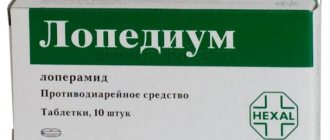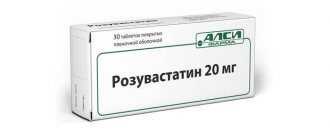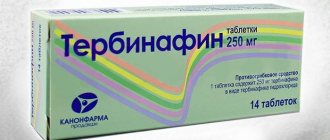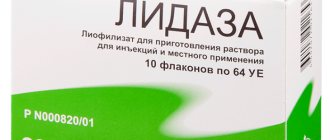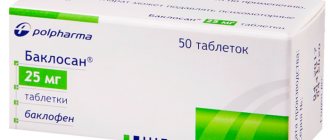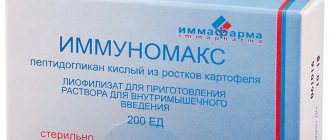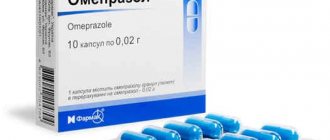- September 16, 2020
- Other drugs
- Elena Volodina
“Clonazepam” is the INN (international nonproprietary name) of an antiepileptic drug. The finished dosage form is available in the form of light orange tablets of 0.5 mg. They have a round shape and solid edges. The pill is flattened on both sides; you can see a cross-shaped mark on it, which divides the pill into four parts.
Clonazepam 2 mg tablets are also produced. They are distinguished by their white color. Otherwise, they are identical in appearance to those described above.
Pharmacodynamics and pharmacokinetics
The principle of action is based on the stimulation of benzodiazepine receptors in reticular pharmacy . Due to the effect on the amygdala complex, located in the limbic system , an anxiolytic effect is noted: anxiety, restlessness, and fear are reduced.
By enhancing presynaptic inhibition, Clonazepam has an anticonvulsant effect. The drug has a positive effect on focal, generalized forms of epilepsy .
Inhibition of afferent, spinal, polysynaptic inhibitory pathways causes a central muscle relaxant effect.
The drug inhibits the activity of motor neurons.
Reviews
The drug received positive feedback due to its effectiveness.
But since the drug can provoke serious side effects, as mentioned in many patient reviews, it is used mainly in hospital settings, where it is easier to monitor and correct the patient’s condition.
Doctors note that the drug, despite its effectiveness, is a dangerous drug that can even cause coma.
Indications for use
Clonazepam is used for atypical absence seizures, epilepsy, atonic seizures , nodding cramps, infantile spasms, and tonic-clonic seizures. When administered intravenously, the drug relieves status epilepticus .
The drug is prescribed for panic disorders, alcohol withdrawal syndrome, psychomotor agitation, insomnia (with organic brain damage), muscle hypertonicity , and somnambulism .
Contraindications
Clonazepam is not used in severe COPD, respiratory depression, shock, coma, myasthenia gravis , acute respiratory failure, severe depression , breastfeeding, pregnancy.
For hyperkinesis, cerebellar ataxia, spinal ataxia , chronic alcoholism, CHF, failure of the renal/hepatic systems, psychoses, bronchospastic syndrome , organic diseases of the brain, sleep apnea , and in the elderly, it is prescribed with caution.
Side effects
Nervous system: lethargy, ataxia, catalepsy , lethargy, feeling tired, slowed motor activity. In rare cases anterograde amnesia , memory impairment, tremor, depression, euphoria , headaches, depressed mood, dysarthria , myasthenia gravis, weakness, dystonic extrapyramidal reactions, paradoxical reactions .
Respiratory system: bronchial hypersecretion , depression of the respiratory center.
Digestive system: heartburn , jaundice, increased levels of liver enzymes, stool disorders, diarrhea, decreased appetite, dry mouth.
Genitourinary system: dysmenorrhea , impaired libido, pathology of the renal system, incontinence, urinary retention.
Clonazepam is addictive and forms drug dependence. Abrupt withdrawal of the drug causes “withdrawal syndrome”: agitation , increased sweating, tremor, dysphoria , anxiety, sleep disturbances, irritability, depression, hyperacusis , derealization, hallucinations , hyperesthesia , photophobia, paresthesia .
Cautions
When using Clonazepam tablets, you should take into account possible effects that may occur during treatment.
Tolerance
You may notice that after 2-3 weeks of taking the drug, its effectiveness begins to decrease.
Drug addiction
If you take Clonazepam for a long time, it can provoke physical and mental dependence on it. The risk of developing such addiction increases with increasing dosage of Clonazepam. The patient’s drug, drug or alcohol addiction also plays a big role here.
Withdrawal symptoms
A sharp o can provoke numerous unpleasant symptoms. These include the following:
- headache;
- increased anxiety;
- muscle pain;
- motor restlessness;
- irritability;
- tension;
- disorientation;
- excitation;
- sleep disturbance.
The addiction to Clonazepam can be quite strong. And if you suddenly stop using this medicine, more serious conditions may develop:
- personality disorder;
- derealization;
- numbness of the limbs;
- increased sensitivity to noise, light, touch, sound;
- delusions and hallucinations;
- seizures of an epileptic nature.
Anterograde amnesia
Some time after starting treatment with the drug, the patient may experience memory problems; it is difficult for him to remember new information. This condition is often observed when the dosage of Clonazepam is exceeded.
Paradoxical reactions
Elderly patients may experience the following reactions after taking Clonazepam:
- irritability, anxiety;
- aggressiveness, agitation;
- rage, anger;
- delusions, hallucinations;
- behavioral disorders;
- psychoses;
- nightmares.
It is recommended to seek help from a doctor if such symptoms appear.
Use for depression
If the patient has had various mental disorders in the past or has had suicidal attempts, then this information should be reported to the doctor before taking Clonazepam. Side effects in such people may include increased depression and suicidal thoughts.
Before starting such therapy, you must inform your doctor about the presence of the following diseases:
- chronic respiratory failure;
- renal or liver failure;
- spinal and cerebellar ataxia;
- increased intraocular pressure (glaucoma);
- porphyria;
- drug or alcohol addiction.
It is worth noting that during treatment with Clonazepam and for at least three days after its completion, you should not drink alcohol.
Clonazepam, instructions for use (Method and dosage)
For epilepsy
For children under ten years of age, about 0.02 mg per kg per day is prescribed. The therapeutic dose is calculated individually and cannot be more than 0.2 mg. 0.05-1 mg/kg per day. The maximum daily dosage for adults is 20 mg.
Children from 10 to 16 years old are initially prescribed 1 mg in several doses per day. Then the dose is increased by a maximum of 0.5 mg.
Adults are initially prescribed 1.5 mg in several doses per day. Then the dose is increased by a maximum of 0.5 mg.
Instructions for the use of Clonazepam for paroxysmal anxiety syndrome
The initial dosage is 1 mg, the maximum is 4 mg. Children under 16 years of age with this condition are not recommended to use the drug.
For the elderly, as well as people with motor problems and impaired renal function, the dose is reduced.
Clonazepam solution
To relieve status epilepticus, the drug is administered intravenously: for children 0.5 mg, for adults 1 mg dropwise or in a slow stream. The amount of the drug administered intravenously should not exceed 13 mg. The injection solution is prepared immediately before administration. Discontinuation of the drug should be carried out gradually.
How does clonazepam affect the body?
The drug reduces the excitability of cells that transmit nerve signals from different parts of the body to the brain, and from the brain to the body. But this effect depends on the dose. This drug affects both health and psyche:
- It destroys the vitamins and minerals necessary for the body, and this gradually destroys the immune system, blood vessels, bones and teeth and other organs and tissues.
- It is deposited in fatty tissues, and years later causes unpleasant consequences, such as fatigue, mood swings, pain, and depression.
- Gradually, dose by dose, it worsens a person’s mood and well-being.
If you take clonazepam with alcohol, antidepressants, or certain other pills, it can lead to an overdose. It may also cause increased symptoms or unpredictable reactions. Taking too much poison that the body cannot handle causes an overdose. A person takes a large dose of one drug or takes several different drugs at once (with the exception of antidotes, which block the action, but without medical knowledge they should not be used).
Symptoms of an overdose of this medicine:
- confusion;
- severe drowsiness up to coma;
- Possible depression of breathing and other reflexes.
In case of an overdose, it is worth giving the person activated charcoal and inducing vomiting if he is conscious. In more severe cases, you need to call an ambulance.
Interaction
There is a mutual enhancement of the effects of muscle relaxants, narcotic analgesics , ethanol, general anesthetics, hypnotics, antiepileptic drugs, antidepressants, and antipsychotics .
In patients with Parkinson's disease, Clonazepam weakens the effect of Levodopa.
Carbamazepine , phenytoin, barbiturates, inducers of microsomal liver enzymes increase the rate of drug metabolism.
Taking narcotic analgesics increases the risk of developing psychological dependence (causing euphoria).
Cemetidine prolongs the period of action of the drug.
Overdose
If the therapeutic dose limits are slightly exceeded, the patient may develop an overdose. It manifests itself in the form of confusion, extreme agitation or pathological drowsiness. Breathing problems, decreased heart rate, hypotension, and nystagmus may occur. If the permissible amount of medication is seriously overestimated, patients fall into a coma.
The use of Flumazenil, a benzodiazepine antagonist, to neutralize the active substance in epilepsy is prohibited. Such a step threatens the development of convulsive seizures. Artificial blood purification based on the principle of hemodialysis will not be effective in this case. First aid consists of gastric lavage, the use of enterosorbents, and symptomatic therapy.
special instructions
To prevent an increase in epileptic seizures, it is recommended to switch to other antiepileptic drugs gradually. During the transition, the likelihood of apathy and sedation increases.
During therapy, alcoholic drinks are strictly contraindicated. Long-term treatment requires monitoring of the blood condition.
The use of the drug during pregnancy causes the formation of drug dependence in the fetus, and the development of “withdrawal” syndrome in the child after childbirth is possible.
Clonazepam has a negative effect on the performance of complex work, control of machinery and transport.
MNN: Clonazepam.
You can overcome addiction by
The Narconon program is an integrated, comprehensive approach that allows a person to get out of the trap. This technique differs from all others in that here a person does not resist cravings, does not fight addiction, but directs his attention and energy to creation, new skills, knowledge and improvement in all areas of life.
A person regains his best qualities and abilities, and as a result, ceases to need artificial methods (drugs) to improve his condition.
If you are facing a drug addiction problem, call us right now!
Share:
Subutex
Muscarine
Clonazepam price, where to buy
It is extremely difficult to buy the drug in pharmacies in Moscow, St. Petersburg and other cities. The thing is that the medicine is sold only in specialized pharmacies and this is not always the case. It is best to check the availability of Clonazepam in pharmacies in Moscow and other cities by calling the pharmacy chains first.
Phone numbers for Moscow:
- 8(495)961-96-10,
- 8(495)627-05-61,
- 8(495)691-64-38,
- 8(495)788-11-00,
- 8(499)128-58-11,
- 8(499)128-56-56,
- 8(495)917-04-34.
The price of Clonazepam in 0.5 mg tablets ranges from 50 to 100 rubles per pack of 30 pieces.
Analogues of the drug
It is worth noting that there is no complete analogue of Clonazepam, however there are its generics and group analogues.
Synonyms of the drug:
- "Antelepsin."
- "Clonotril."
- "Rivotril."
Group analogues:
- "Difenin."
- "Carbamazepine".
- "Carbamazepine-ALSI".
- "Zeptol."
- "Pagluferal".
The information presented above is for informational purposes only. You should not voluntarily prescribe a substitute for Clonazepam if it suddenly seems that it is not suitable for you. It should be remembered that only a doctor has the right to prescribe this or that medicine.
